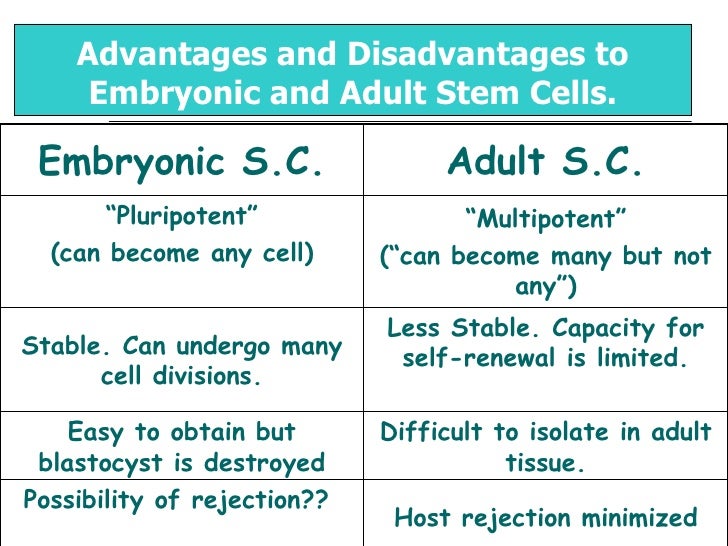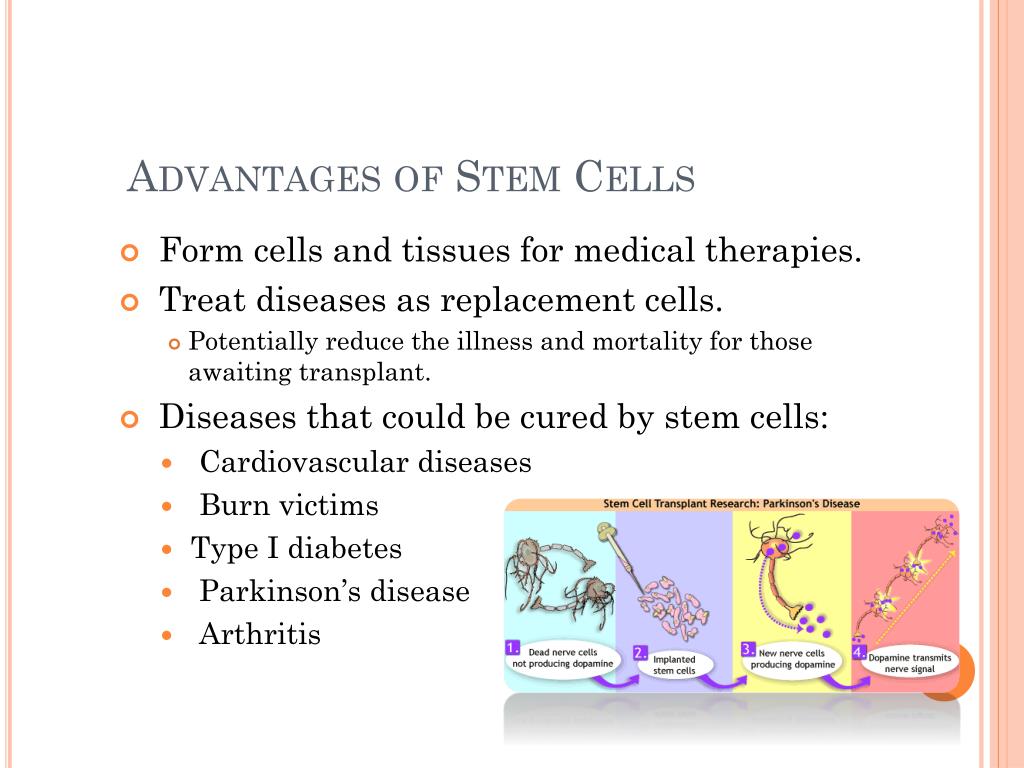

Bone marrow transplants are an example of adult stem cell transplant. Scientists use embryonic stem cell as a general term for pluripotent stem cells that are made using embryos or eggs, rather than for cells genetically. The best source is the five-day-old embryo.Īdult stem cells will differentiate into a narrower range of cell types. in cases of spinal cord or brain injury, that have led to paralysisĮmbryonic stem cells can differentiate into a wider range of cell types, but are difficult to obtain and their use raises ethical challenges.in cases of multiple sclerosis, which can lead to paralysis.They could be used to replace cells that have been damaged or destroyed, eg: Advantages & Disadvantages Stem cell therapy is a relatively simple procedure that avoids the complications associated with invasive surgical procedures. They therefore have the potential to be transplanted into patients to treat medical conditions and disease. However adult stem cells are difficult to find and extract from the tissue and can only produce a few types of cell.Stem cells can divide to produce new cells, which can then divide into different cell types. Thus the key argument put forth regarding the use of embryonic stem cells is that a life is a life and that should never be compromised. If the adult stem cell is taken from the person to be treated, it will not cause rejection in the body. With adult stem cells the embryo is not destroyed, so it isn't an ethical issue. iPSC have certain advantages over other stem cell types in models of regenerative medicine and wound healing. The authors note that, as of 2015, the reprogramming process of. Although iPSs are similar in function to embryonic stem cells, the two cell types are not identical at every level. The body also recognises the cells as 'different' and will reject them without the use of drugs. Similar to embryonic stem cells, iPSC are pluripotent, have the potential for self-renewal, and can differentiate into any adult cell type. The pluripotency of iPSs is so similar to that of embryonic stem cells, that scientists can use iPSs to grow many kinds of cells and even embryonic structures. Embryonic stem cells are easy to extract from the embryo and can produce any type of cell, but the downside of using embryonic stem cells is that the embryo is destroyed when the cell is removed, this is an ethical issue because some people believe that embryos have a right to live. They also both may produce a cancer cell instead of a healthy one, which is a risk. Major advancements still need to be made and new technology must be developed before it can be used in an efficient and safe way. So, overall both embryonic and adult stem cells replace the faulty cell with a healthy cell, so the person is well again. One of the largest issues that people have with stem cell research is just how risky and unknown it truly is. (Adult Stem Cells) produce only a few types of cell.(Adult Stem Cells) difficult to find and extract from tissue.(All Stem Cells) may produce cancer cells instead of healthy cells.

(Embryonic Stem Cells) body recognises the cells as 'different' and will reject them without the use of drugs.For therapeutic cloning, is it right to create embryos. The best source is the five-day-old embryo. Embryonic stem cells fit this role but have many disadvantages, especially for treatments, including immune rejection by the recipient. (Embryonic Stem Cells) embryo destroyed when cells removed - some people think embryos have a right to live Ethical issues A source of embryonic stem cell is unused embryos produced by in vitro fertilisation. into a wider range of cell types, but are difficult to obtain and their use raises ethical challenges. As viable human brain tissue is not available for use in studying disease development and creating therapies for neurological disorders like Huntington’s disease (HD), researchers desperately needed an alternative cell source for this purpose.(Adult Stem Cells) if taken from the person to be treated, will not cause rejection by the body.The embryonic cells used for research are harvested 5 7. It is simpler to grow these cells in comparison to adult stem cells.

This is because the embryonic ones are easier to identify, isolate, and can be purified without much problems.


 0 kommentar(er)
0 kommentar(er)
